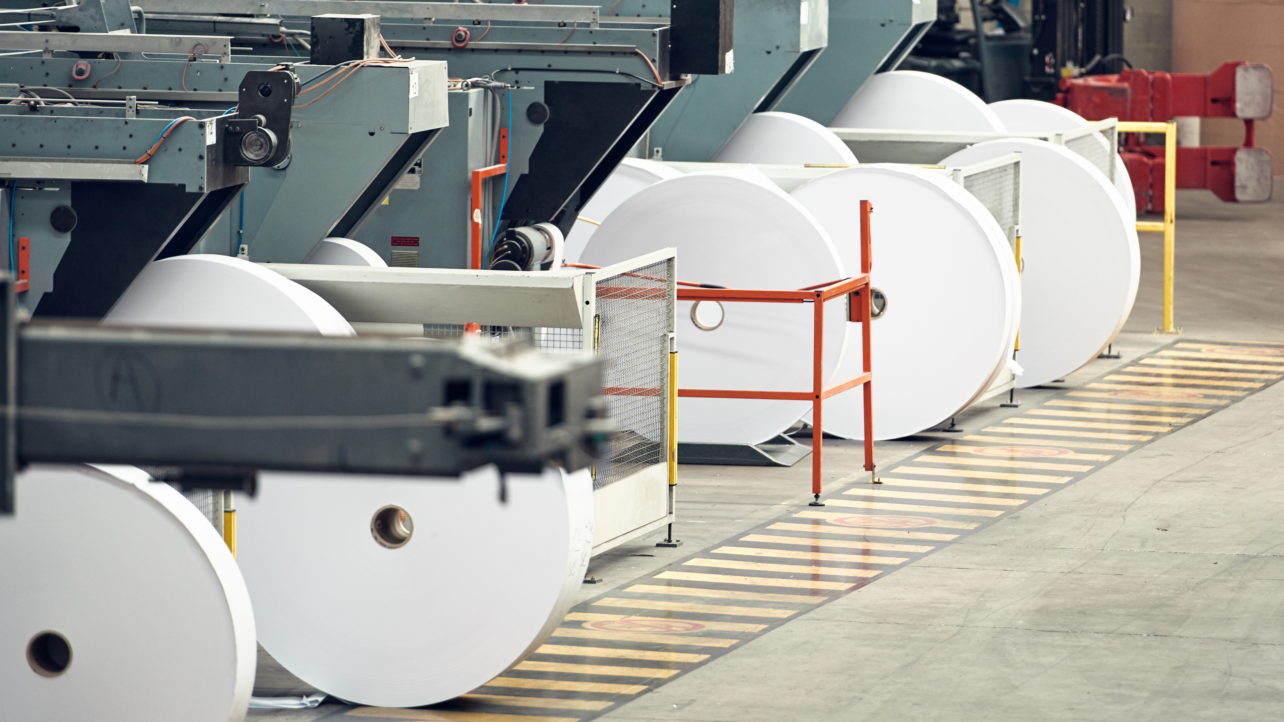Revolutionize your paper manufacturing with AI-driven optimization. Enhance efficiency, cut costs, and achieve autonomous operations like industry leaders Arjowiggins and Oji Paper. Embrace the future of smarter production!
Learn more


Maintenance is an ongoing concern for manufacturers of all sizes. If things aren’t running smoothly, it can impact production efficiency, product quality, cost-saving efforts, and more.
Even when things are working correctly, the next malfunction is always on the horizon. The ability to anticipate—and react faster—to maintenance issues is vital for manufacturers to meet production demands.
The right maintenance strategy can save your employees significant time and effort while also saving your company money. In this article, we’ll discuss the touchstones of predictive maintenance and key considerations for building a predictive maintenance strategy.

Predictive maintenance (PdM) is a technique that uses data analysis tools and techniques to detect potential operational issues before they result in failure. Under this strategy, companies can better control their maintenance by anticipating, scheduling, and influencing operational problems related to machine health. In short, your maintenance strategy is informed by performance data from your production lines, not a predetermined schedule.
Predictive maintenance aims to anticipate breakdowns before they occur. In turn, you can reduce unplanned downtime, optimize resources, and keep production moving forward. Working
towards strong indicators of failure or maintenance needs can have significant payoffs. Those manufacturers who do it well can have increased profitability by 4 to 10 percent due to higher availability and a more efficient workforce.
Historically, preventative maintenance has been the go-to maintenance strategy for manufacturers. Preventative maintenance is a strategy based on regularly scheduled maintenance determined by a calendar or cycle. This approach relies on routine care and historical data to prevent unplanned downtime events, regardless of how equipment is actually performing.
Preventative maintenance offers a low-tech, low-cost maintenance strategy option that many manufacturers still rely on. Factors such as the supply chain crunch, booming demand, and legacy equipment are often roadblocks that prevent teams from developing PdM strategies.
However, as more manufacturers are diversifying the data they have available, preventative may be costing companies more than it’s actually saving them.
Unlike preventative maintenance, predictive maintenance focuses on:
• Achieving needs-based maintenance scheduling by using data analytics. This often results in less work and cost than defaulting to historical calendars/cadences.
• Reducing unnecessary downtime by striving to only stop a machine when maintenance indicators are detected (vibrations, defect rates, etc.). As a result, teams likely have fewer unplanned production disruptions.
• Reducing maintenance costs by more accurately determining maintenance schedules and necessary inventory (parts, lubricants, etc.) and staffing appropriately.
• Shortening maintenance events by understanding where to focus maintenance towards targeted issues resulting in faster resolution.

It’s important to keep in mind that bringing predictive maintenance to the plant floor requires a certain level of digital maturity. Understanding where your maintenance strategy stands today can help you determine what tools, techniques, and resources you’ll need to make the next step in your journey.
Culturally, your organization also needs to be invested in being data-forward. Teams must be focused on data analysis and reporting. Today’s digital solutions provide teams with the necessary infrastructure and data capabilities to turn production and event data into strategic assets.
If your company is using IIoT (or heading in that direction), you are one step closer to having the tools necessary to deploy a predictive maintenance strategy. Advanced technologies (like an IIoT platform) collect and organize the data needed to inform when, where, and how often to perform maintenance.
McKinsey reiterates the importance of finding the right technology vendor. “The right partner can help make PdM adoption seamless, for instance by providing training tailored to the personnel involved, while engaging them throughout the deployment to ensure buy-in, or by integrating PdM actions into existing workflow systems.”
Ensuring your teams understand your goals and that you have the appropriate IT/OT architecture in place can be the difference in long-term success. Regardless of where you stand with your maintenance strategy, Braincube offers tools to help your digital transformation, whichever steps you choose to take.
In addition to technology, change management needs to be at the forefront of your strategy. When implementing a new way of working (and especially implementing new technologies), it’s important to step back and consider how your maintenance operations will respond to technology that will improve their daily work. The idea of something new can be threatening or even demotivating to your frontline team.
Communicating things like: Where do we stand today? What are we hoping to achieve? And what will it take to get us there? can help teams to better understand the strategy and impact the changes will make.
Moving to a data-driven predictive maintenance strategy can improve overall operations by reducing costs and risk. In order to make the move to predictive maintenance, though, companies need to be ready—both in terms of tech and company culture.
We have many resources to help guide you in both of these endeavors. If you’re ready to start adapting a more predictive approach to maintenance, here are some of our most useful resources:

This primer article can help you decide the type of maintenance strategy & technology is most effective: preventative or predictive.

In this white paper, learn how predictive maintenance tech helps manufacturers reduce downtime and boost profits.

Learn how Kimberly-Clark was able to implement closed-loop production processes by leveraging predictive data analytics and ready-to-use apps.